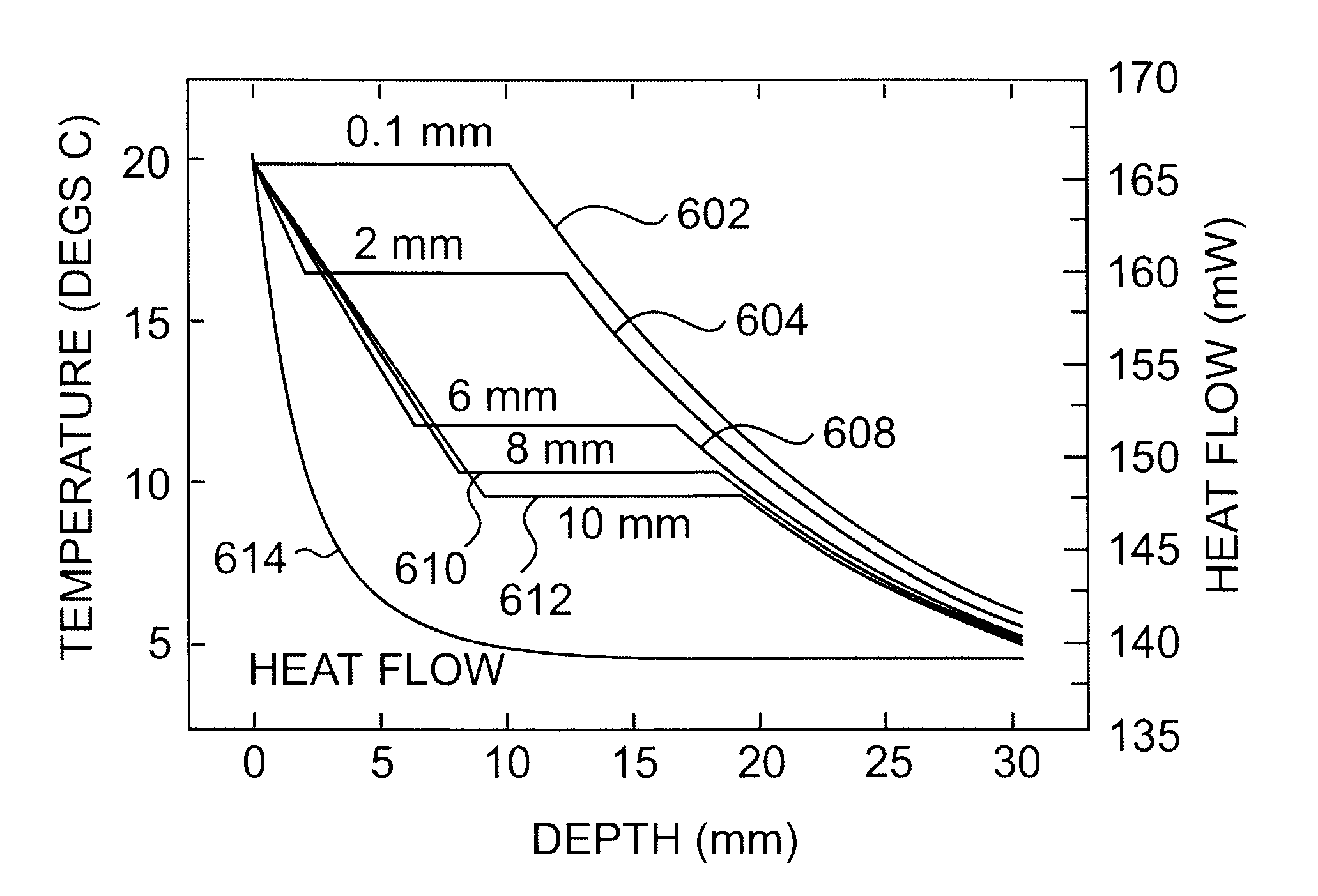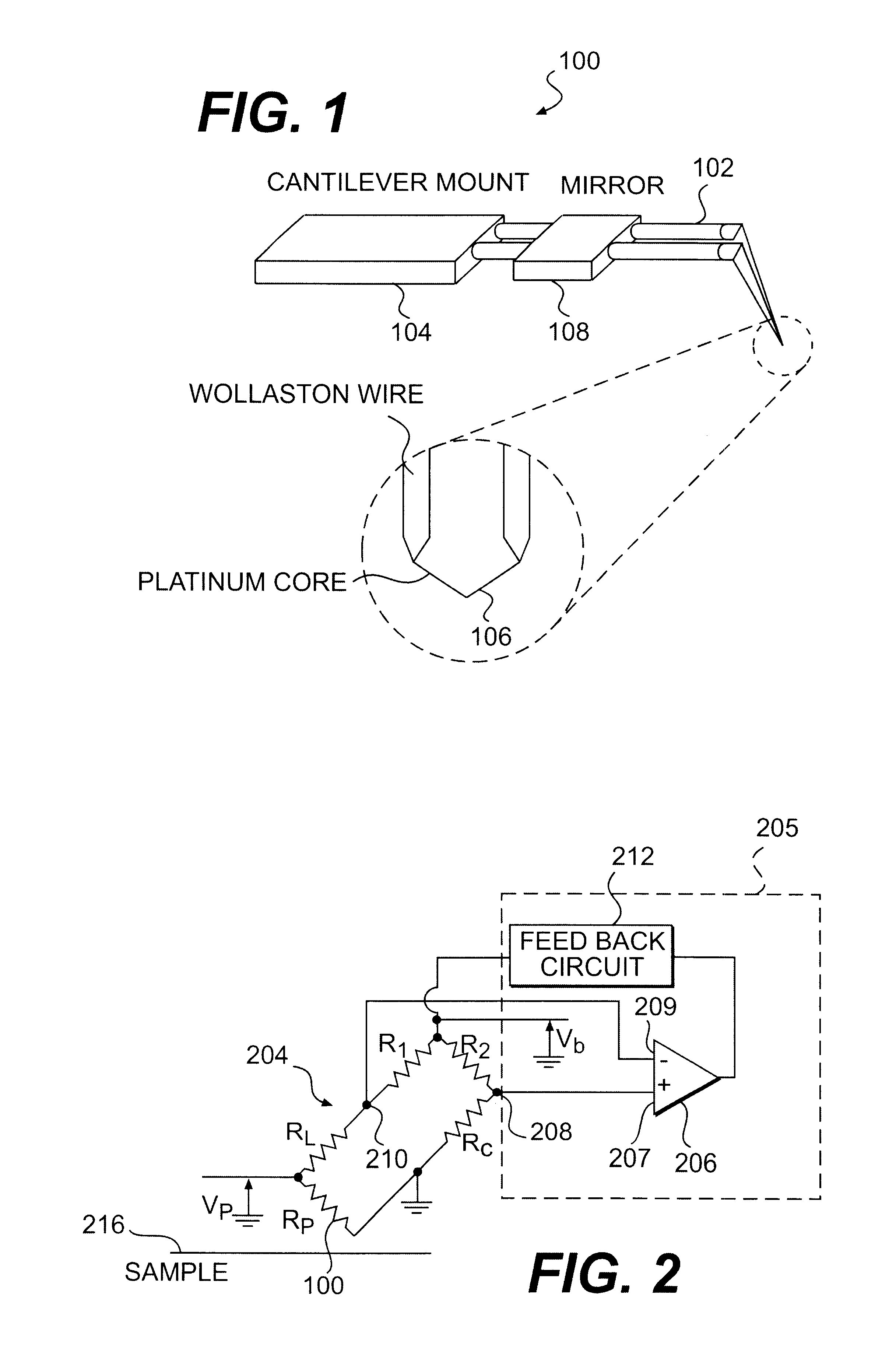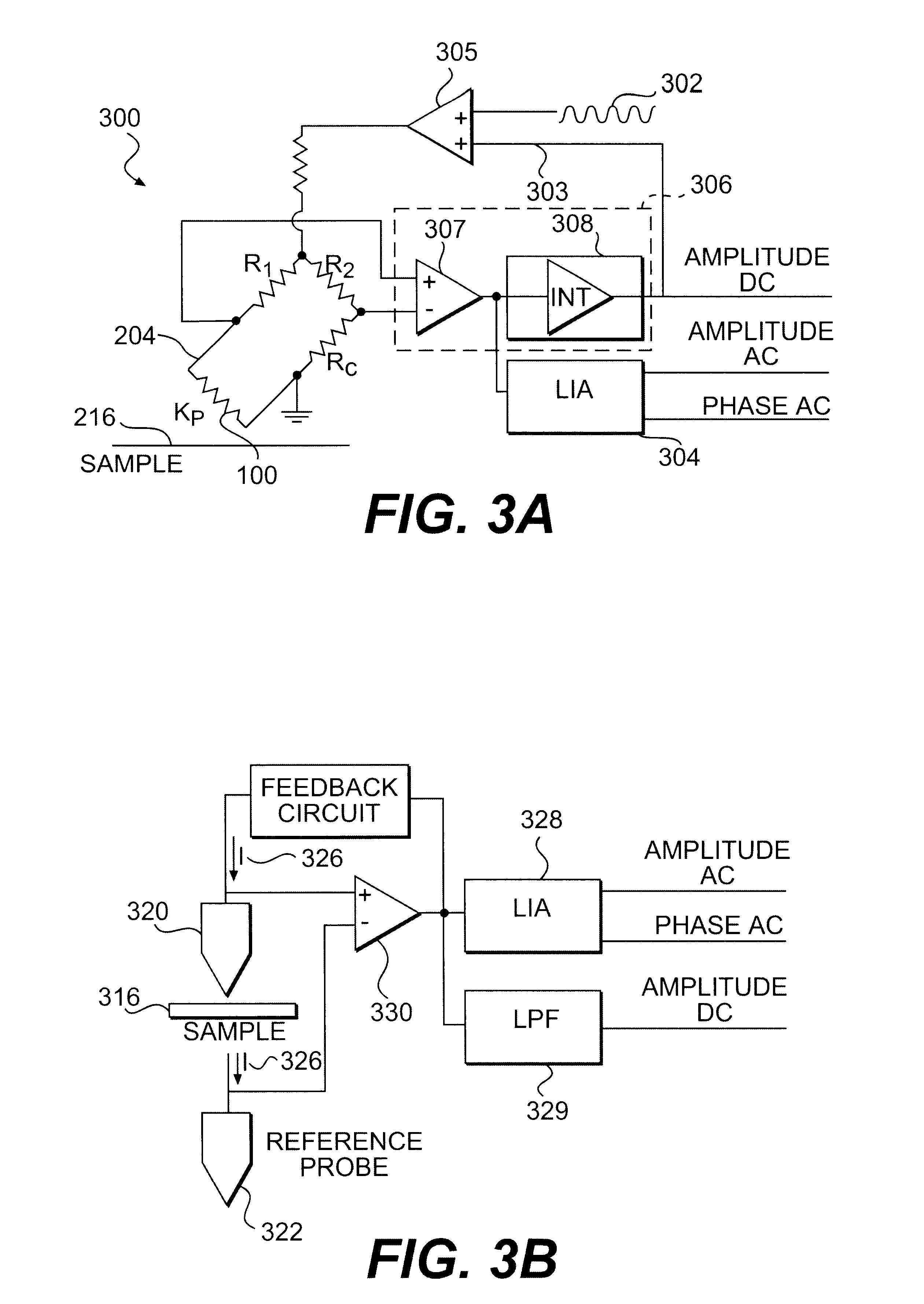Method and apparatus for performing localized thermal analysis and sub-surface imaging by scanning thermal microscopy
- Summary
- Abstract
- Description
- Claims
- Application Information
AI Technical Summary
Benefits of technology
Problems solved by technology
Method used
Image
Examples
example 1
This example illustrates the use of the present invention to map heterogeneous samples with heterogeneous thermal properties. FIGS. 11A, 11B, 11C and 11D were obtained with the scanning probe microscope of the present invention operated in the constant temperature mode and the probe temperature set at 40.degree. C. The thermal contrast images were computer-generated, using the feedback voltage V.sub.b applied to the Wheatstone bridge circuit 204. Because of the relatively slow scan speed (usually 100 .mu.m s.sup.-1), steady state (thermal equilibrium between the probe and the region of the sample whose temperature is affected by the probe) was reached at each point, so that the image contrast was indeed determined by the value of the heat flow. At each sampling point a certain volume of material was heated. This volume can be approximately delimited by the thermal contact area and an effective depth determined by the temperature gradient below that contact area. The heat flow from t...
example 2
This example demonstrates the use of the present invention for the study of immiscible polymer blends systems, including a Poly(vynil chloride) [PVC] / Polybutadiene [PB] blend, a Poly(ethylene oxide) [PEO] / Polybutadiene [PB] blend and a Poly(methyl methacrylate) [PMMA] / Chlorinated polyethylene [CPE] blend. The blends were cast from solutions on microscope glass covers with a 50 / 50 percentage weight. After drying, films about a hundred microns thick are formed.
In each system, the two polymers involved segregate, being immiscible: one forms a matrix and the other forms island-like domains. The two phases in each sample were identified by mapping the thermal conductivity variation across the surface of the sample using the thermal probe, operated in the closed loop mode at a constant temperature of 40.degree. C. The signal was obtained from the feedback voltage applied to the controlling bridge in order to maintain a constant probe temperature. The contrast at each point represents vari...
example 3
This example illustrates the use of the present invention to follow, in real time, the behavior of PVC domains in a PVC / PB blend as a function of temperature, using a temperature-controlled hot stage. The same area was scanned at increasing hot stage temperature, which was maintained constant during each scan. The probe was operated in the closed loop mode, at a constant temperature of 85.degree. C. Images obtained at room temperature (RT), 50.degree. C., 70.degree. C., 78.degree. C., 95.degree. C. and 100.degree. C. are shown in FIG. 14A (1402, 1404, 1406, 1408, 1410 and 1412). (The temperature of the sample is shown in the upper right-hand corner of each image.) FIG. 14B also shows images (1420, 1422, 1424, 1426, 1428 and 1430) of PVC domains in a PB matrix as a function of increasing temperature. As the temperature is increased up to about 70.degree. C., little change to the system is observed, although small domains can be seen to move and are absorbed into neighboring larger on...
PUM
| Property | Measurement | Unit |
|---|---|---|
| diameter | aaaaa | aaaaa |
| diameter | aaaaa | aaaaa |
| length | aaaaa | aaaaa |
Abstract
Description
Claims
Application Information
 Login to View More
Login to View More - R&D
- Intellectual Property
- Life Sciences
- Materials
- Tech Scout
- Unparalleled Data Quality
- Higher Quality Content
- 60% Fewer Hallucinations
Browse by: Latest US Patents, China's latest patents, Technical Efficacy Thesaurus, Application Domain, Technology Topic, Popular Technical Reports.
© 2025 PatSnap. All rights reserved.Legal|Privacy policy|Modern Slavery Act Transparency Statement|Sitemap|About US| Contact US: help@patsnap.com



